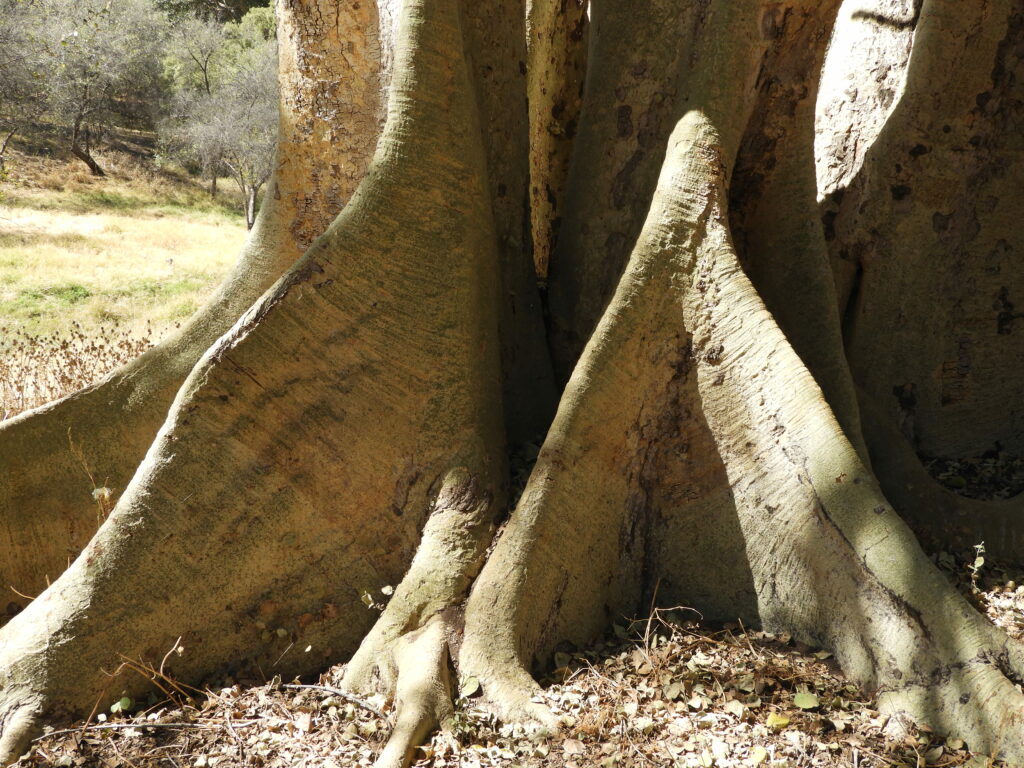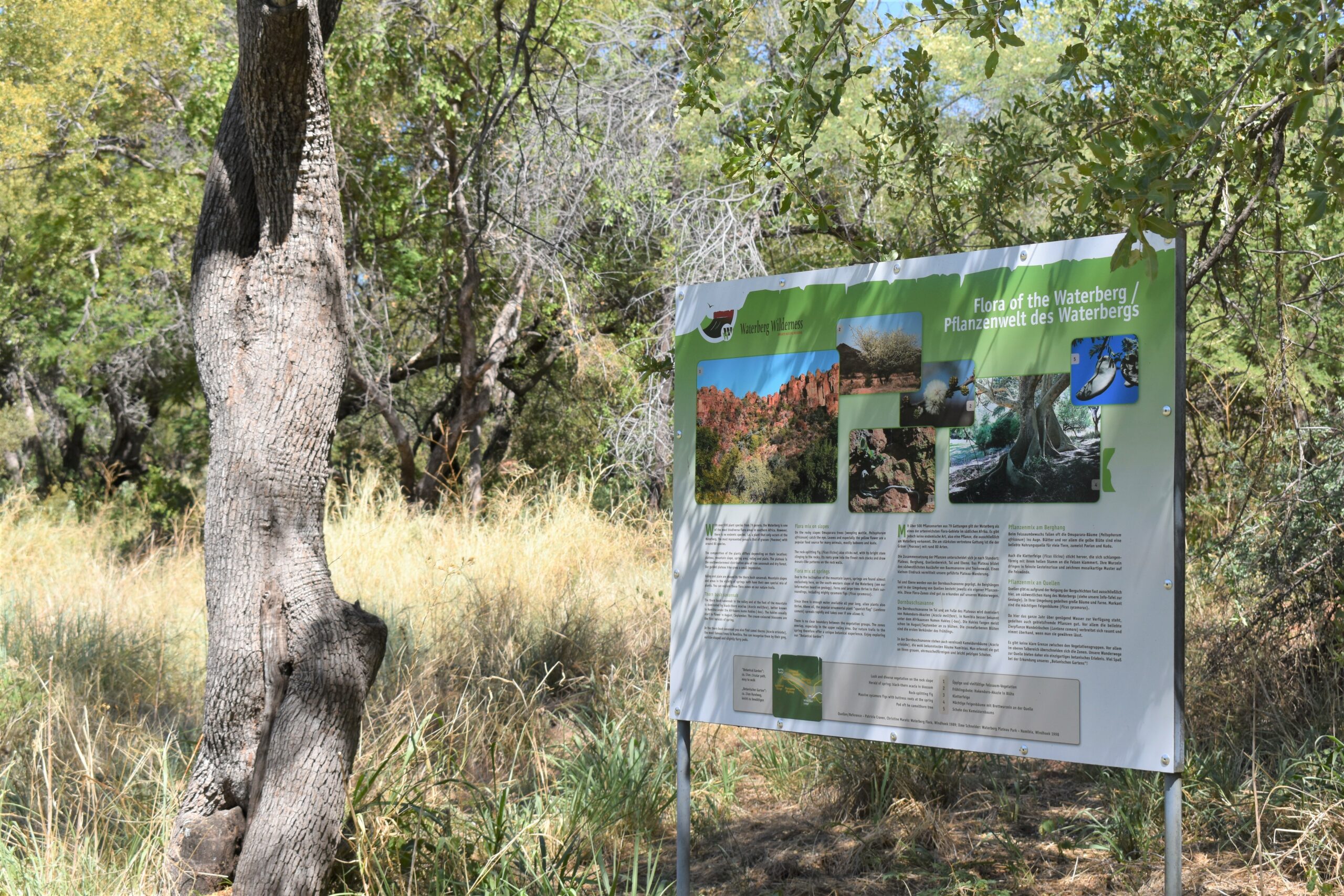The southeastern slope of the Waterberg is ideal to explore the mountain’s world of plants. Waterberg Wilderness private nature reserve offers a “botanical garden” in its valley. Small information boards present facts about trees and other plants along the trails.
Flora hotspot
With about 500 plant species, the flora of the Waterberg is one of the most diverse in southern Africa. This variety is due to the different habitats created by the plateau, the slopes, the valleys, the springs and the plains around the mountain. Read more about this in our previous newsletter. In this edition of our newsletter we introduce you to a few of the more striking plants.
The fig-mulberry: The huge fig trees (Sycamore / Ficus sycomorus) near the spring are particularly impressive. The word sycomorus is derived from greek and means fig-mulberry. The natural habitat of the sycamore stretches across southern Arabia, East Africa and into southern Africa. The sycamore only grows in areas with shallow groundwater and grows up to 45 m high. It is a protected species in Namibia.
These mighty fig trees have formed so-called buttress roots. The phenomenon is known to botanists for trees in the tropics and wetlands. Star-shaped and usually equipped with ribs, the buttress roots offer more support than ordinary roots in loose or boggy soil. The „boards“ often end not very deep below the surface in a network of small root strands.
The camelthorn (Vachellia erioloba / still more commonly known as Acacia erioloba) is one of Namibia´s most cherished trees. It can grow up to 20 m in height and has a very distinctive majestic crown. The trees are protected as they were over-exploited in the past. The hard wood was used for fencing posts, house building, tools and weapons. Its name actually refers to the giraffe (Giraffa camelopardalis). Giraffes commonly feed on the leaves with their specially-adapted tongue and lips that can avoid the thorns. Erioloba (erio = wollen and loba = (ear)lobe) describes the pods quite illustratively.
The mother-in-law’s tongue: Belonging to the asparagus family (Sansevieria), this species was named after Henry Pearson (1870 – 1916), a director of the Kirstenbosch Botanic Gardens near Cape Town. You can often find dense colonies of sansevieria pearsonii in shady spots. Its three to seven cylindrical leaves grow upright and are in average 50 cm long. During spring the plants carry berry shaped flowers varying in colour from olive green to orange. In German the sharp leaves gave the plant the name „bayonet plant“. In Afrikaans it is commonly referred to as „oryx horn“. Though „mother-in-law’s tongue“ seems to be a valid description as well ;).
The buffalo thorn: Ziziphus mucronata is a widely distributed tree, occurring from South Africa to Ethiopia and Arabia. Adapted to a variety of habitats, it appears in many shapes. The tree’s spines, both straight and curved, are extremely sharp, which is why even buffalos avoid them. The common Afrikaans and German names, meaning wait-a-bit, refer to the exhausting procedure to free oneself from the bush, if caught by one.
Lichens: Botanists are also thrilled by the variety of lichens which form unique white, green or yellow patterns on the reddish sandstone canvas. Lichens are a symbiotic form of life, an inseparable partnership of a fungus and a partner capable of photosynthesis – mostly green algae or cyano-bacteria. Since the fungus is the dominant partner, lichens are considered fungi. Experts estimate that there are 140 different species at the Waterberg.
Do you know what the so-called ancestor trees – also known as leadwood – are all about? More about this and other plants in our next edition. For now, feel free to check out our social media, where you can see some pictures of the plants described here.

The buttress roots of the mighty fig trees in the valley of Waterberg Wilderness. They provide more support in loose or boggy soil than ordinary roots.




